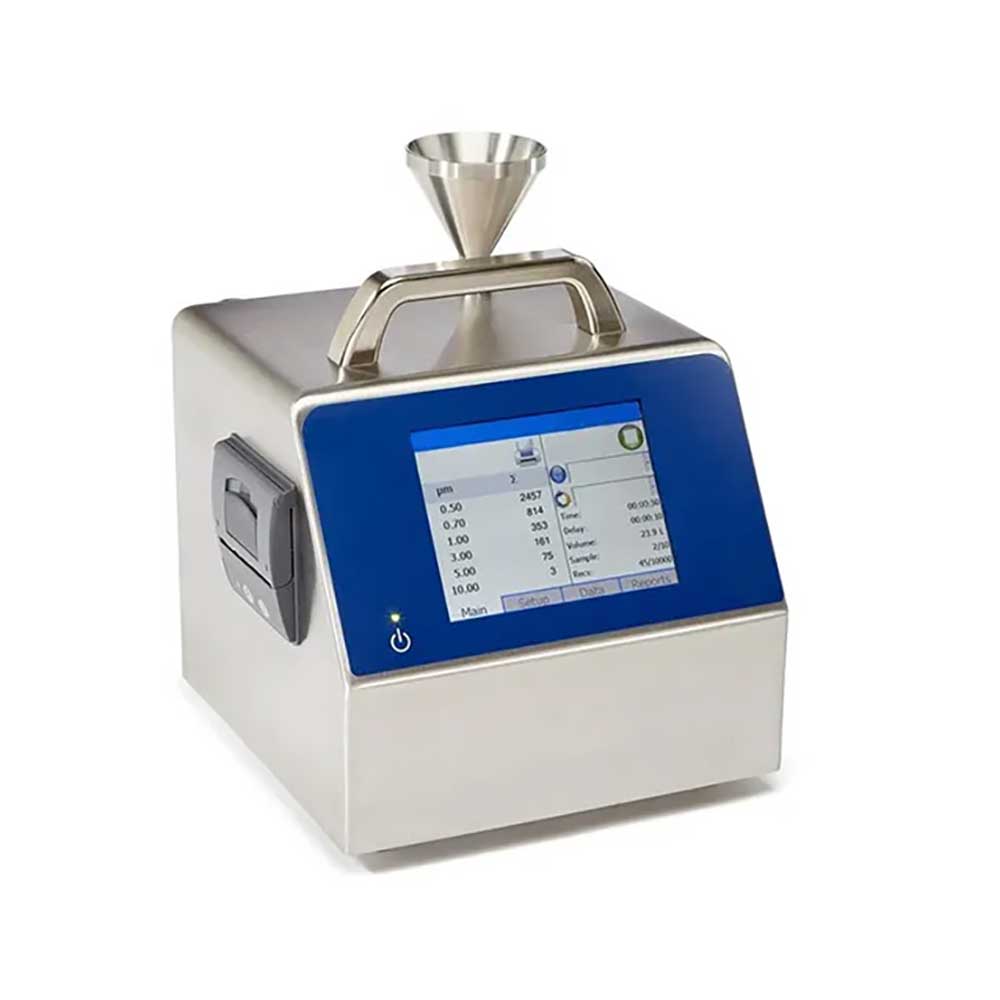Cleanroom Particle Counter
A dust particle counter is a specialized instrument designed to measure the concentration and size distribution of airborne particles within a cleanroom environment. This ensures precise monitoring of air purity and contamination levels in controlled spaces.
Basic Principles:
Airborne particles scatter light, a phenomenon known as light scattering. The degree of scattering is influenced by various factors, including:
- Particle size
- Wavelength of the incident light
- Refractive index of the particles
- Absorption characteristics of the particles
A fundamental principle of light scattering is that the intensity of scattered light increases as the surface area of the particles grows. This correlation allows for the determination of particle size based on the intensity of the scattered light, forming the basis of light scattering particle counters.
Since individual particles generate weak scattered light pulses, these signals must be converted into electric pulses with higher amplitude. A photoelectric converter amplifies these pulses, which are then further enhanced and filtered by an electronic circuit, allowing for accurate particle counting.
Working Principle:
The dust particle counter operates through the following process:
- A light source directs a focused beam into the measuring chamber.
- As particles pass through the chamber, they scatter the incident light, creating light pulse signals.
- The optical signal is captured by a detector and immediately transformed into an electrical pulse.
- These pulses are amplified and processed by the electronic circuit, filtering out unwanted signals.
- The counter analyzes and displays the total particle count, with pulse amplitude corresponding to particle size.

